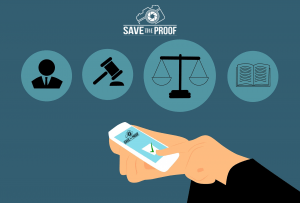
When we provide evidence to a judicial proceeding, what we intend to do is to provide information to prove the claims in our lawsuits or the existence of facts that may constitute a crime.
The advancement of technology has led to the existence of more ways to capture information, and the fact that these means are more innovative or not, does not imply that the information obtained has more or less relevance when making a joint assessment of the evidence.
The existence of digital evidence, which is yet another means of obtaining information that may be relevant in a judicial proceeding, has led us to adapt our way of acting in all phases of the evidence. However, these must be subject to the same guarantees as any other type of evidence:
In order to be able to guarantee the lawfulness, admission (subjecting it to contradiction if necessary) and valuation, we must know how to physically incorporate such evidence into a judicial proceeding. Nowadays it is not a technical problem to provide a typewritten document or a photograph taken with an analogical camera. The problem arises when we want to provide an email, the content of a web page or a post on social networks, often leading us to present “screenshots” or simple printouts, with the risks involved as we have discussed in this other article.
Article 382 of the Civil Procedure Law allows us to propose as evidence in a judicial proceeding the reproduction of words, images and sounds captured by means of filming, recording and other similar instruments. In addition, at the time of proposing the evidence, a written transcription of the same must be attached, in the event that the evidence consists of the recording of words, or the printing on paper of the images that are intended to be proposed.
Once the evidence has been proposed, a record of the same shall be drawn up if it is necessary to identify the films, recordings or reproductions. And the material containing the word, image or sound will be guarded by the Counsel of the Administration of Justice so that it does not suffer alterations.
How do we provide SaveTheProof certificates?
Once the SaveTheProof.com user has completed the certification process, the platform makes available for download a ZIP file, which includes the certificate in PDF format and a ZIP file containing metadata that guarantees the authenticity of the entire certification process. The certificate (in PDF format) contains the evidence to be accredited in the judicial proceeding, and this is the document that we will provide telematically and printed on paper, to deliver the corresponding copies to the parties. All this without greater inconvenience than the own challenge that can be made on any type of private document (See https://www.savetheproof.com/en/legal-validity/).
The certificates of file or web page do not have greater complication, since providing the PDF certificate obtained all the necessary information is delivered.
However, browsing session certificates (up to 30 minutes of Internet browsing certified with audio and video) may not include, in the PDF certificate, all the necessary information (remember that it can include a maximum of 50 captures chosen by the user during the browsing time) and may require the viewing of the video with the recording of the session to complete it.
In this case, it is advisable to request the recording of the session by the Legal Counsel of the Administration of Justice, providing all the parties to the proceedings with the “link” (available in the certificate) from which to view the video with the navigation, together with the specific password associated with the certificate. This password is only known by the user who has generated the certificate and can be viewed from his private area:

In this way, all the parts have access to the evidence obtained, being able to verify the legality of the same, and with the document generated and previously provided, all the necessary information to be able to make any type of expert valuation in the event that the evidence is challenged.
The final evaluation of the evidence admitted in a judicial proceeding will depend on the sound criticism that the judge may make of it.


